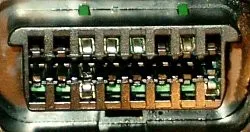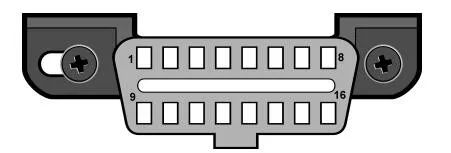OBDLink SX USB 425801 Diagnostic Interface & OBDWiz Software for Windows ALI PROMOTION
Connect With Your Car Like Never Before
OBDLink SX can be used as a diagnostic scan tool, trip computer*, logger, and real-time performance monitor. All you need is a 1996 or newer vehicle and a Windows PC with a USB port, and you have a sophisticated, yet easy-to-use diagnostics system. OBDLink SX is a breeze to install and configure and features unparalleled performance, intelligent sleep mode, exceptional third-party software support, free lifetime firmware and software updates, and a modest price tag.
Includes Exclusive OBDwiz PC Diagnostics Software
OBDLink SX includes the free OBDwiz PC diagnostics software for Windows PCs, laptops, and netbooks, which works exclusively with OBDLink products. OBDwiz is packed with outstanding features that make it easy to access, graph, log and export real-time engine data. You can also clear the 'Check Engine Light,' read all diagnostic trouble codes and research them online, check emissions test readiness, and calculate instantaneous and average MPG. Want more gauges? Create a custom live dashboard directly on your screen!
Maximum Vehicle Coverage
OBDLink SX works with all 1996 and newer cars & light trucks sold in the United States (except hybrid or electric vehicles). It also supports EOBD, JOBD, and all other international variants of OBD-II. The OBDLink proprietary connection algorithm enables SX to connect to more OBD-compliant makes & models than any other scan tool.
Key Features:
· Maximum vehicle coverage
· Automatic sleep & wake-up
· Small form factor
· Free Windows PC diagnostic software
· Free firmware updates
· More software options
· 3-year manufacturer warranty
· Supports some Android phones & tablets*
· Supports Windows PC, laptops, netbooks & tablets
· Note: Apple iOS devices are not compatible
· Note: This product is not compatible with hybrid or electric vehicles
Package includes:
OBDLink SX USB Interface
Printed Quick Start Guide
OBDLink® Vehicle Compatibility Chart
**Please Note: OBD-II compatibility is not related to where the vehicle is manufactured where your vehicle was bought when new. To read the chart below, choose the country where your vehicle was sold new. If you do not see the country below, check your vehicle manual, research online, or consult with your dealership to confirm OBD-II compatibility.
**Please Note: Hybrid and Electric vehicles are low or zero emission vehicles, our scan tools may not work. Check your vehicle manual, research online, or consult with your dealership.

1996 or newer model year vehicle sold in the United States
United States legislation requires all cars and light trucks model year (MY) 1996 and newer to be OBD-II compliant. More information is available on the EPA‘s website . Our scan tools work on all 1996 and newer cars and light trucks sold in the United States, 2001 or newer model year gasoline vehicle sold in the European Union
Commission Directive 70/220/EEC, Annex I:
8.1. Vehicles with positive-ignition engines
With effect from 1 January 2000 for new types and from 1 January 2001 for all types, vehicles of category M1, except vehicles the maximum mass of which exceeds 2500 kg, and vehicles of category N1 class I, must be fitted with an on-board diagnostic (OBD) system for emission control in accordance with Annex XI. [...]
Note that here "European Union" means countries which were members of the EU in 2000.
2004 or newer model year diesel vehicle sold in the European Union
Commission Directive 70/220/EEC, Annex I:
8.2. Vehicles with compression-ignition engines
Vehicles of category M1, except
- vehicles designed to carry more than six occupants including the driver,
- vehicles whose maximum mass exceeds 2500 kg,
from 1 January 2003 for new types and from 1 January 2004 for all types, must be fitted with an on-board diagnostic (OBD) system for emission control in accordance with Annex XI.
Note that here "European Union" means countries which were members of the EU in 2003.
Other vehicles
If your vehicle does not fall into any of the above categories, look under the hood and try to locate a label (Fig. 1) that explicitly states that the vehicle was designed to comply with OBD-II legislation.

Fig. 1 - Vehicle Emission Control Information Label
In this case, OBD-II is used as a general term and can mean any of the following:
· OBD II (California ARB)
· EOBD (European OBD)
· JOBD (Japanese OBD)
You may also consult your vehicle's owner's manual and perhaps contact your local dealer. However, be aware of the fact that many dealers do not know the difference between OBD and OBD-II.
If the vehicle is not OBD-II compliant, you cannot use a generic OBD-II scan tool such as ElmScan to obtain diagnostic information from your vehicle.
But my car has the 16-pin OBD connector, shouldn't it be OBD-II compliant?
No, not necessarily. A lot of European and Asian manufacturers equipped their vehicles with D-shaped 16-pin connectors long before they began installing OBD-II systems on those vehicles. One curious thing to note here is the fact that most non-EOBD compliant vehicles had a DLC that does not fully conform to SAE J1979. Compare figures 2 and 3, and notice the "ears" on the non-EOBD compliant Ford Focus.

Fig. 2 - Ford Escort DLC

Fig. 3 - J1962 Vehicle Connector, Type A

 Whatsapp: +86-13480885545
Whatsapp: +86-13480885545  Live Support: Chat with us online
Live Support: Chat with us online
 Email: 8081242@qq.com
Email: 8081242@qq.com
 Skype: jensen.tce
Skype: jensen.tce
 Live Chat
Live Chat





 Go Back
Go Back







 Add to Cart
Add to Cart







 Skype: jensen.tce
Skype: jensen.tce  Live Support: Chat with us online
Live Support: Chat with us online



